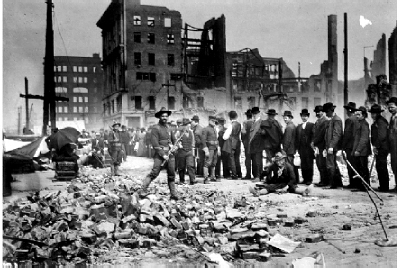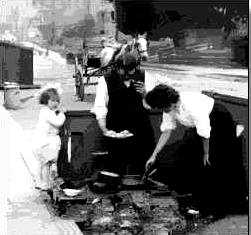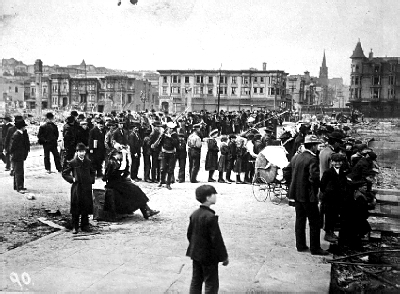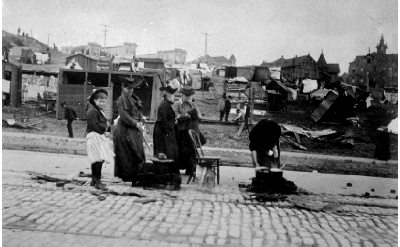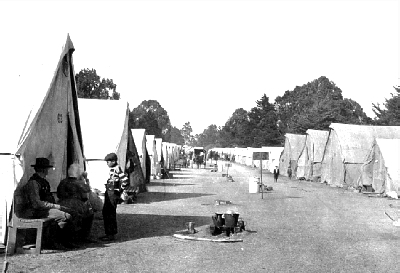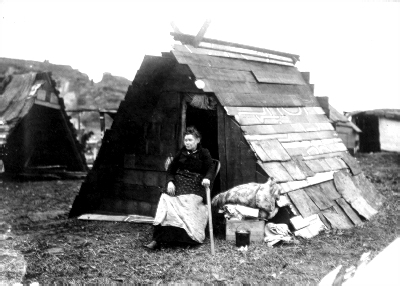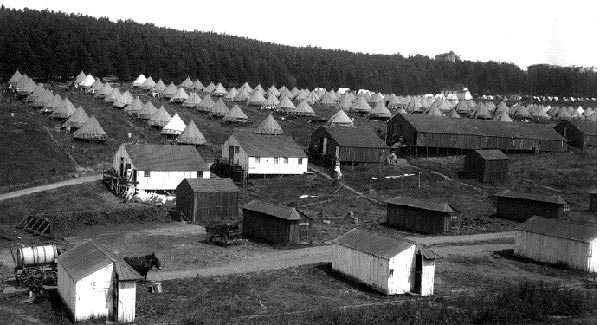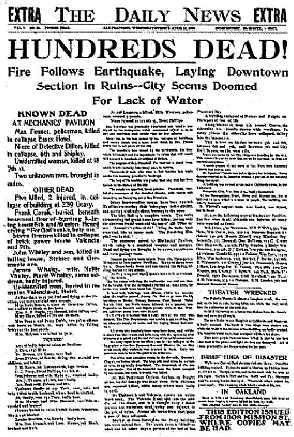
To see this article enlarged
"I learned that the Board of Supervisors estimated that 478 died.
The State Board of Health said 503 died.
And General (Adolphus) Greely, from the U.S. Army, said 498 died."
She believes an effort was made to downplay the true results of the disastor, for fear that the city wouldn't be rebuilt.
She estimates the death total to be around 3,000.
Many survivors left the city, fleeing by railroad to other parts of the country, or across the bay to Oakland by ferry.
Others stayed,living in tents, in refugee camps set up by the army.
And, a few fortunate ones, didn't lose their homes.
Acording to the
Southern Pacific Railroad,
300,000 people were evacuated by train.
This transportation was provided free,
and estimated costs to Southern Pacific
exceeded $400,00
"The refugees were carried free by the railroads to any point they wished to go, and it is estimated that over one hundred thousand people have left the peninsula on which San Francisco stood".
(This article was printed before the figures were final)
Jack London
